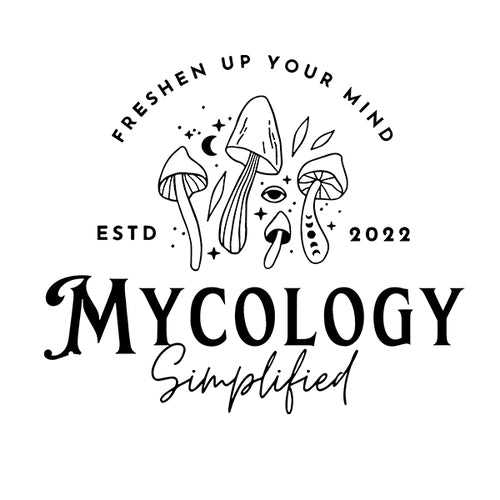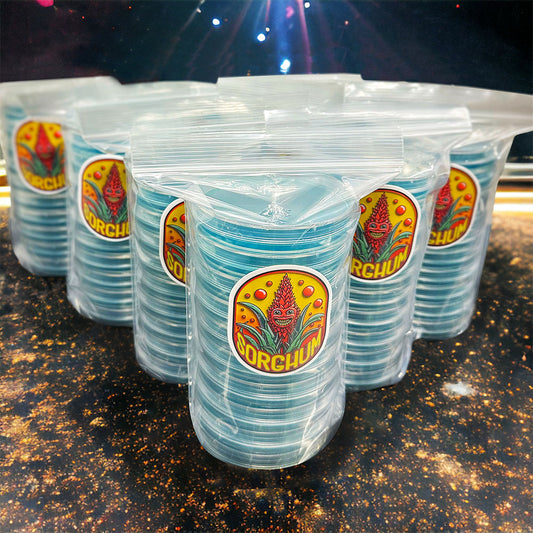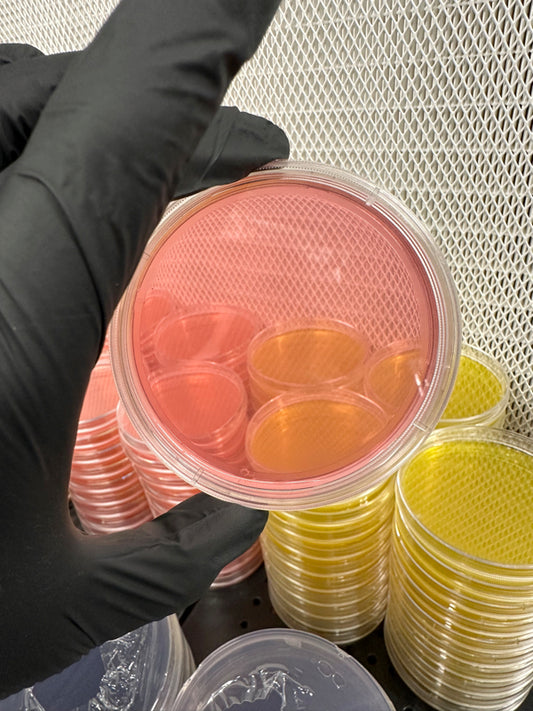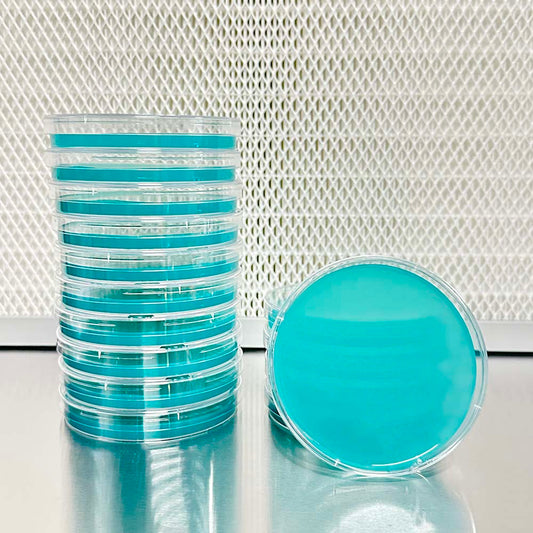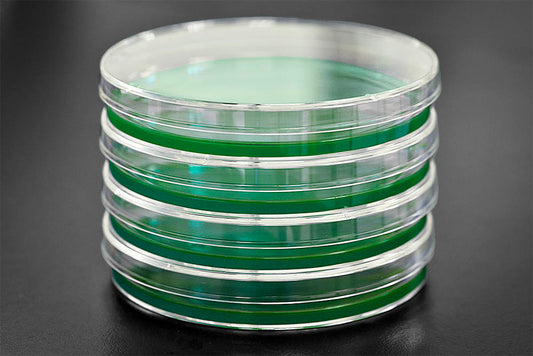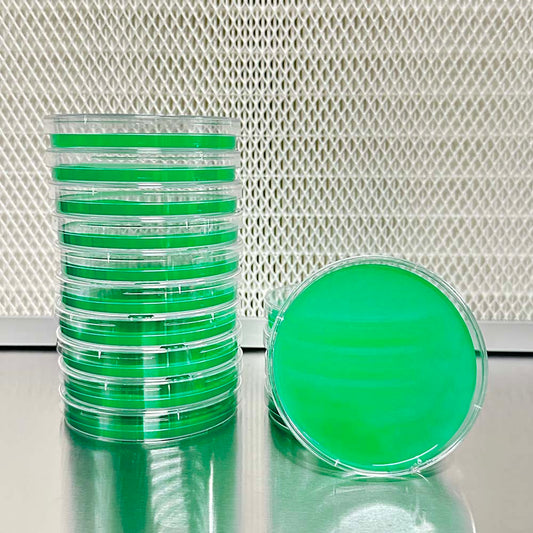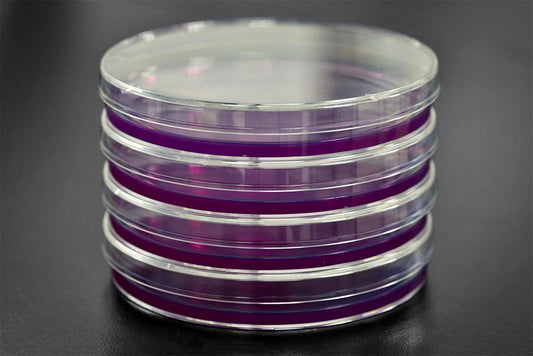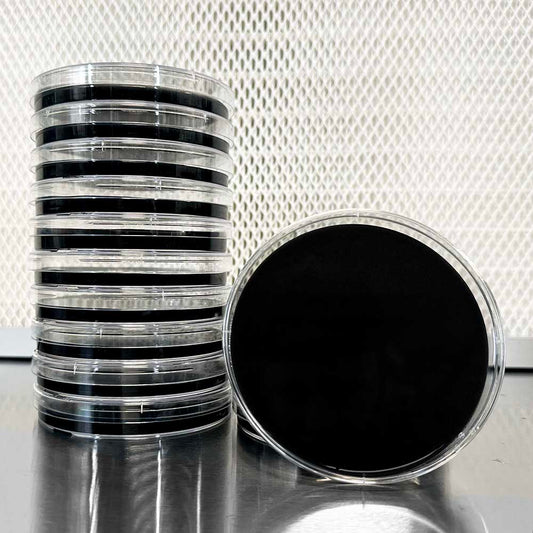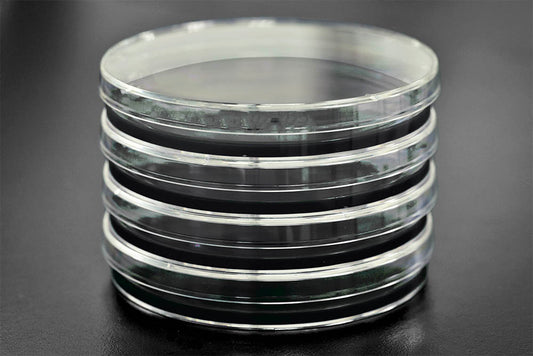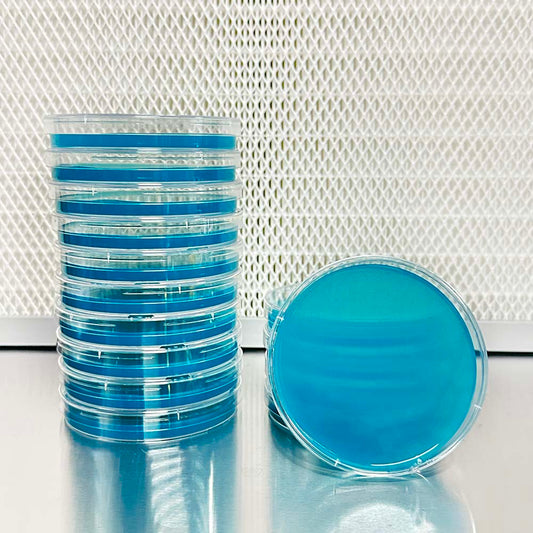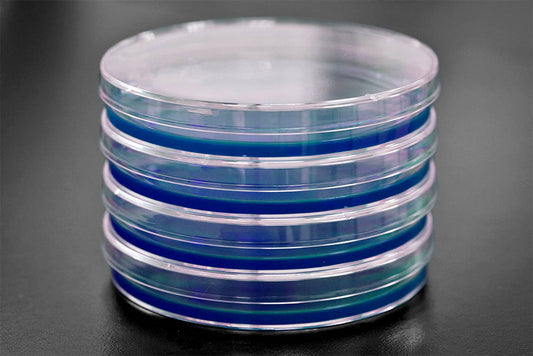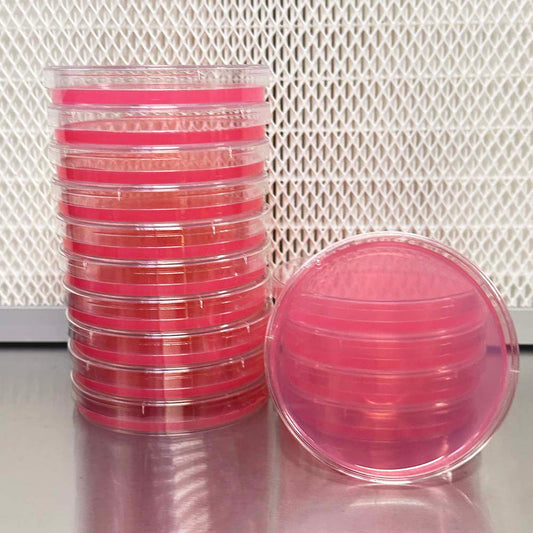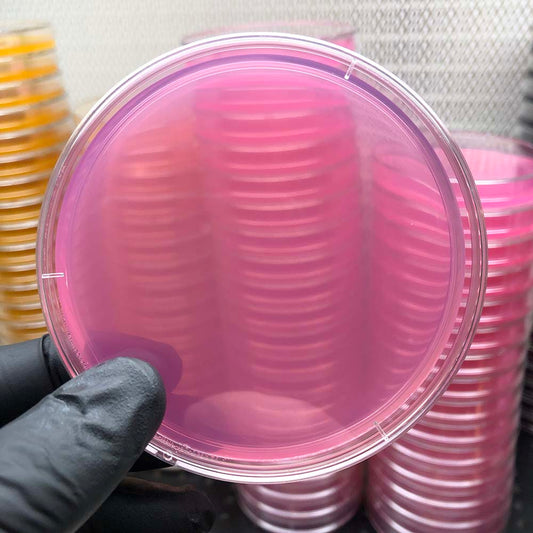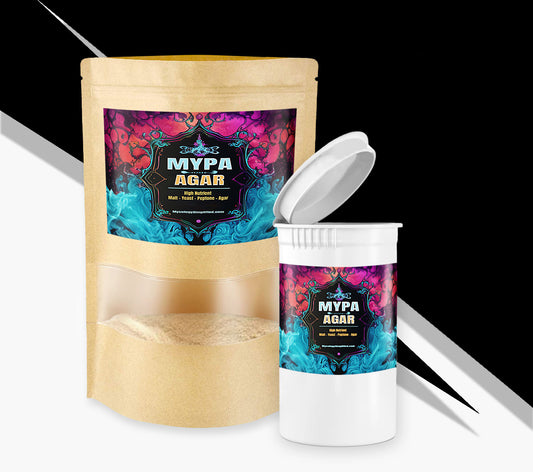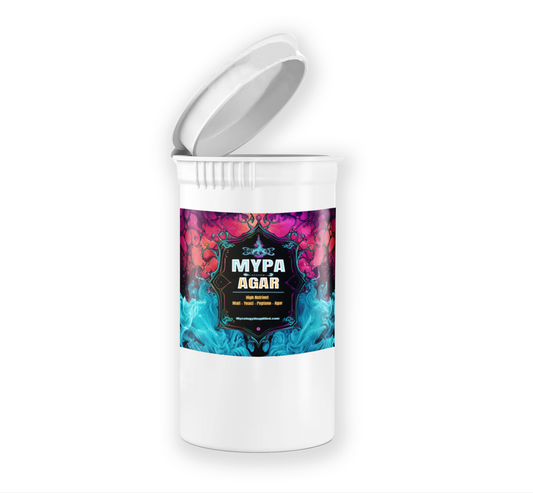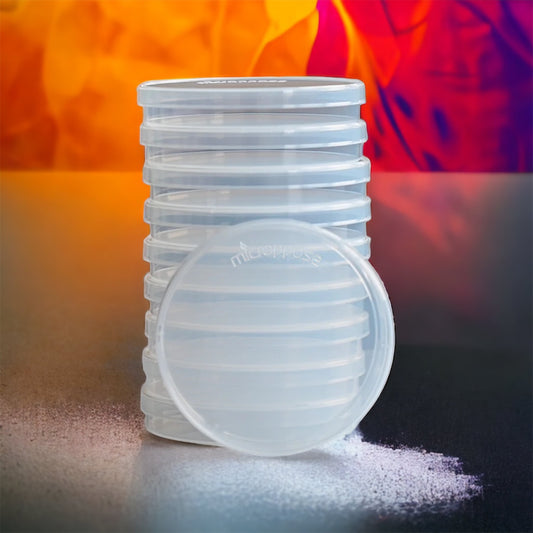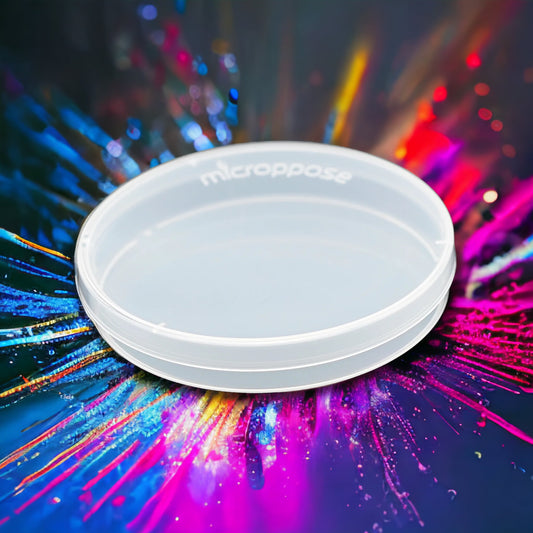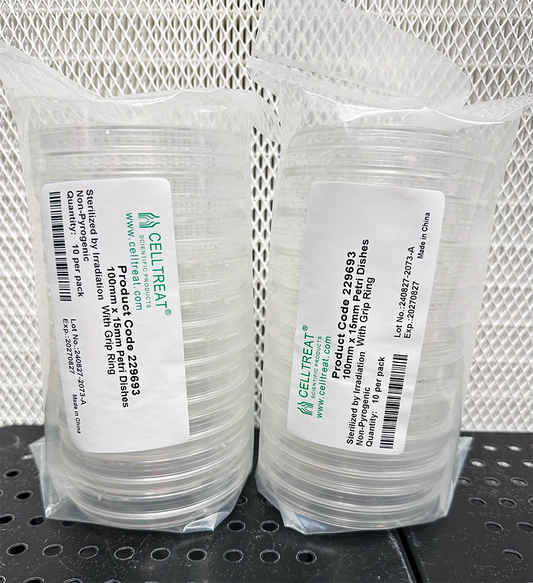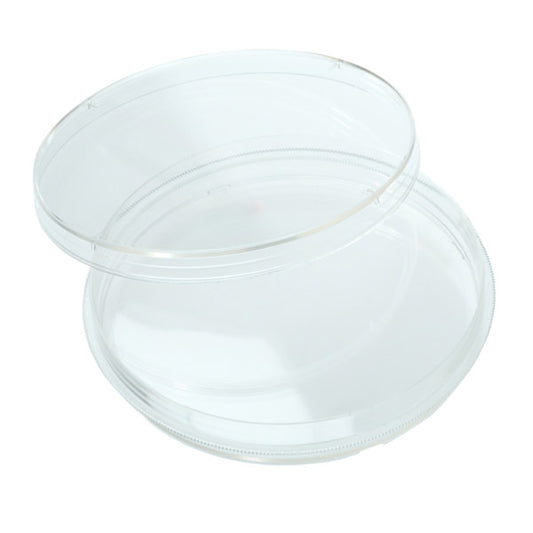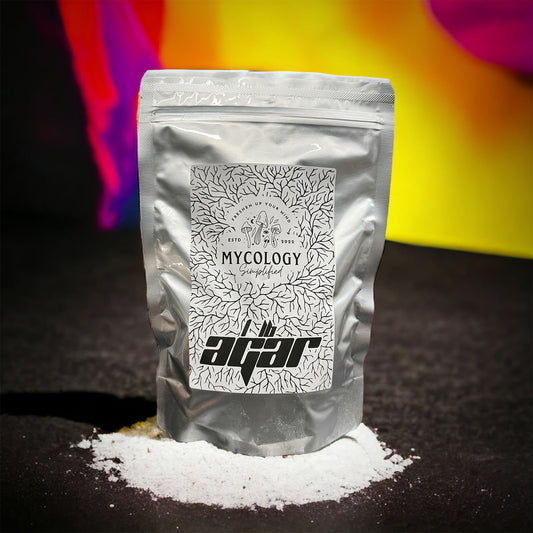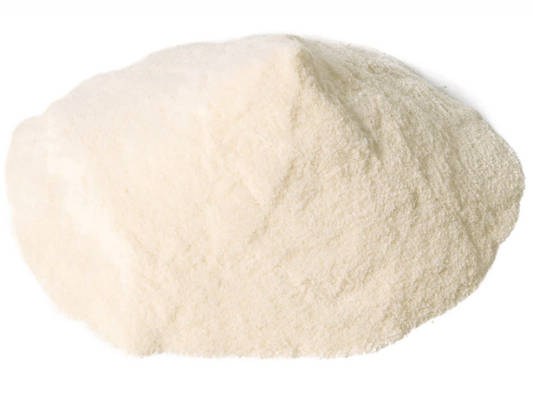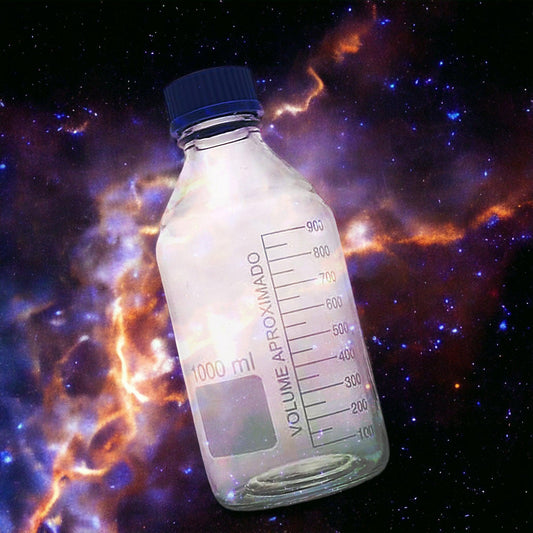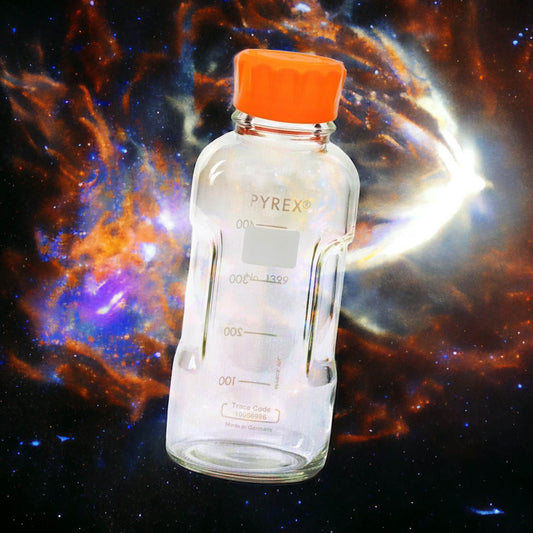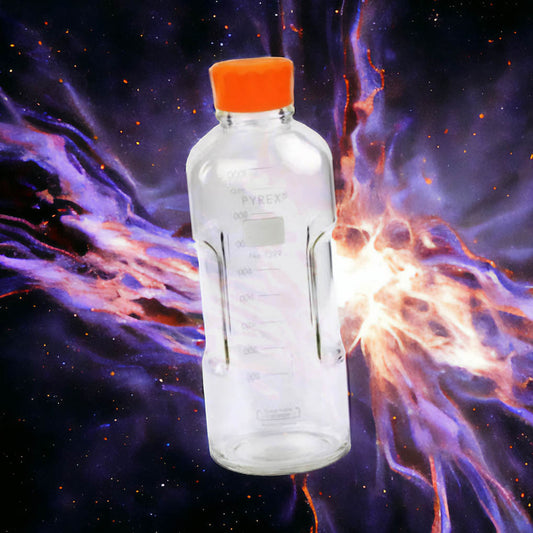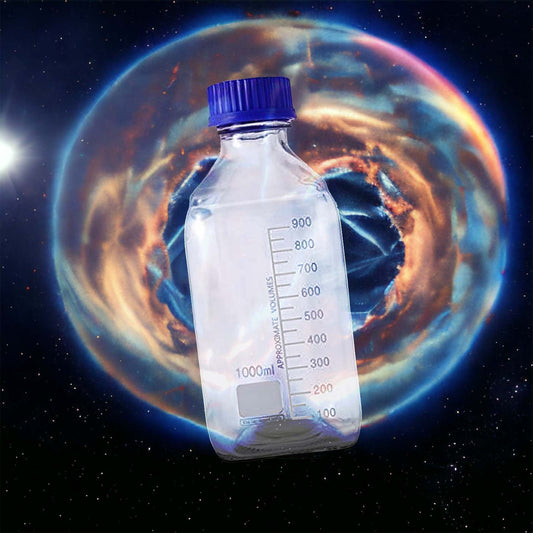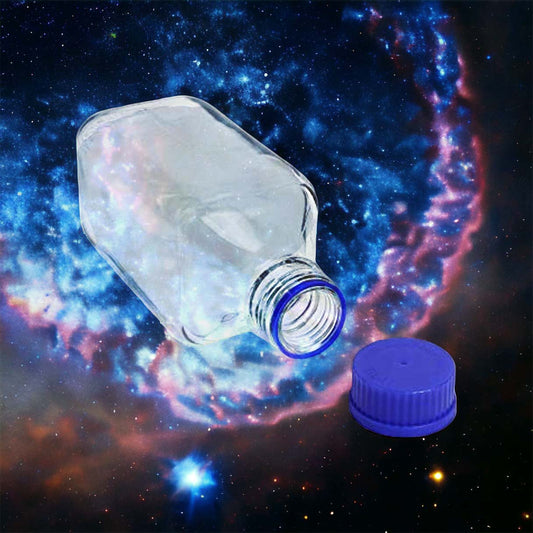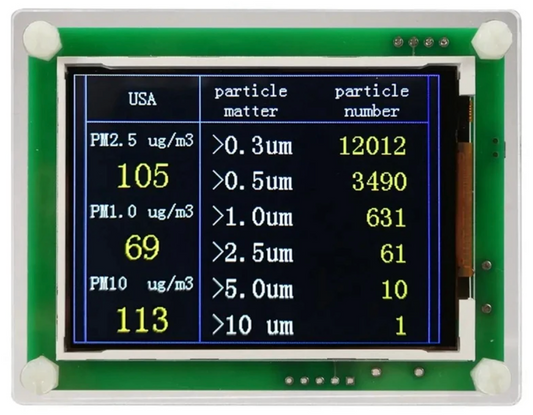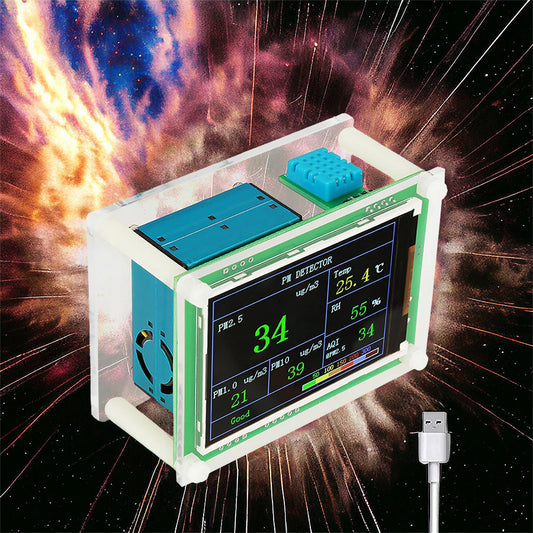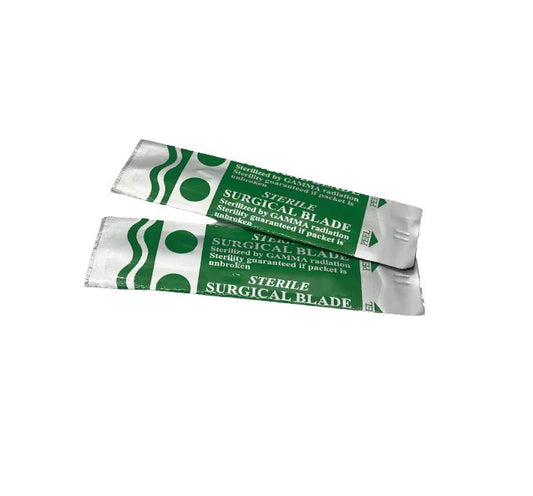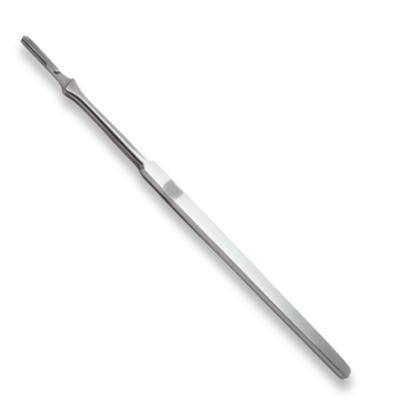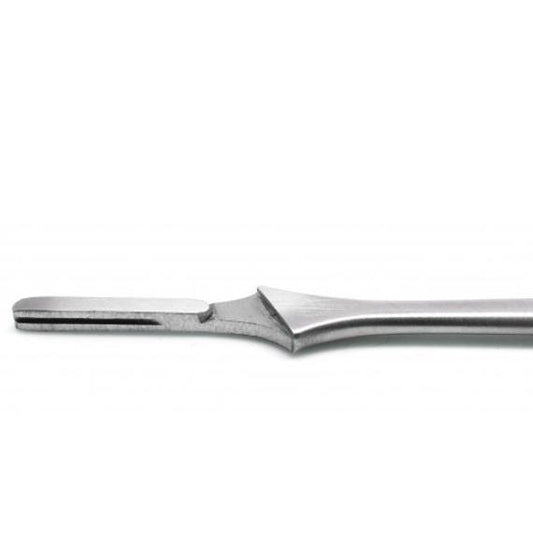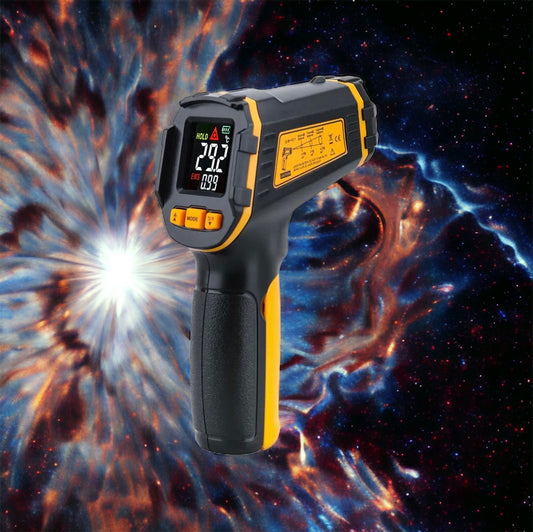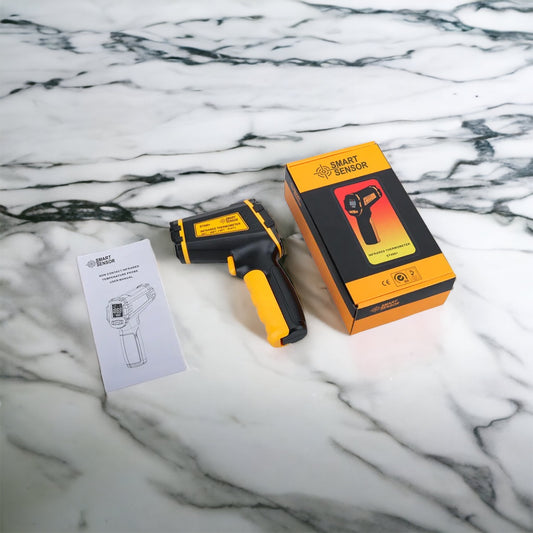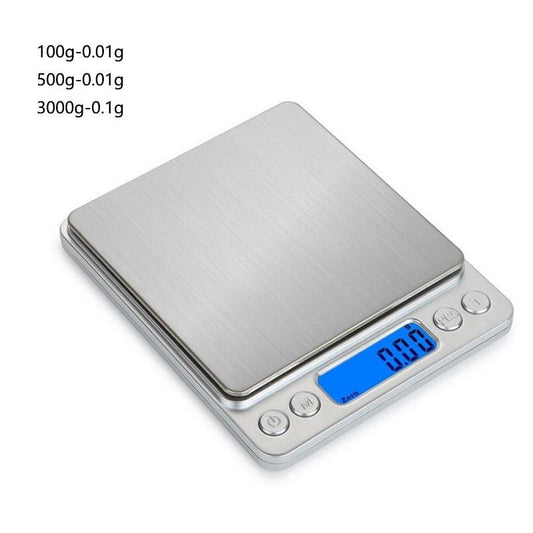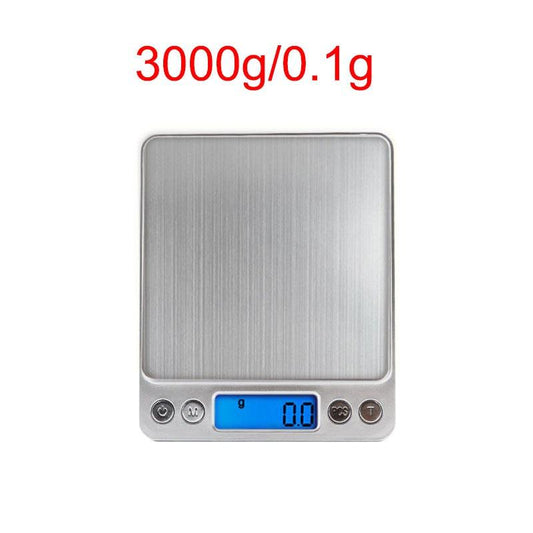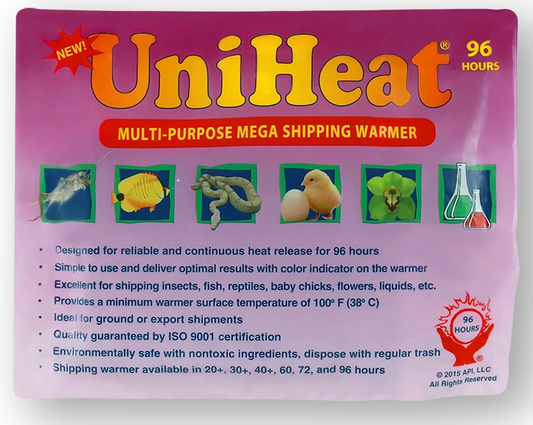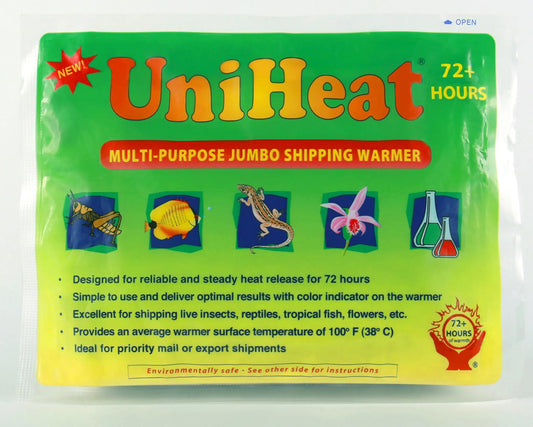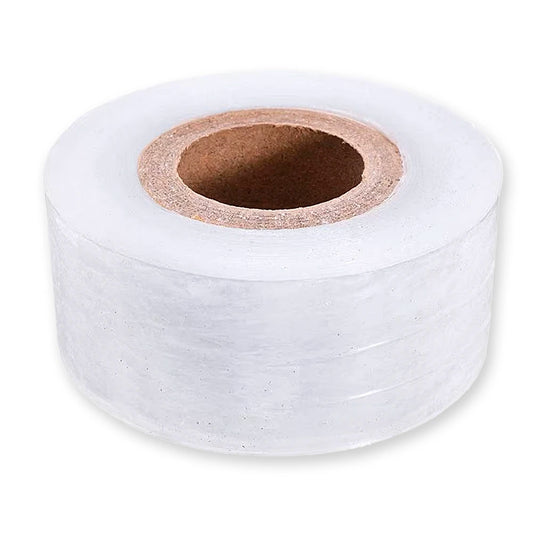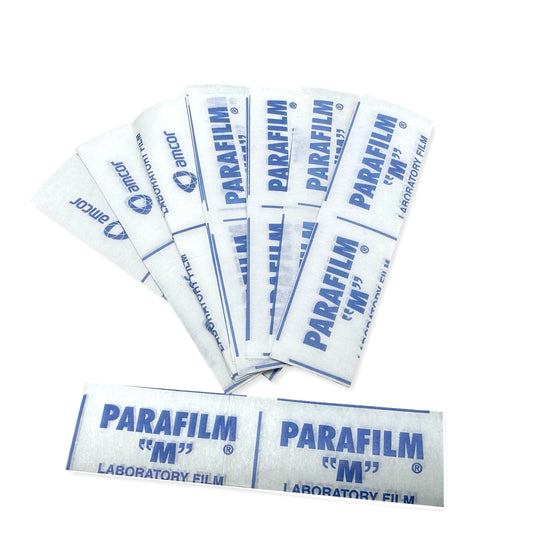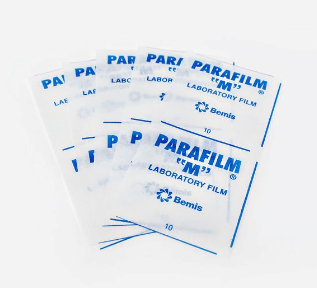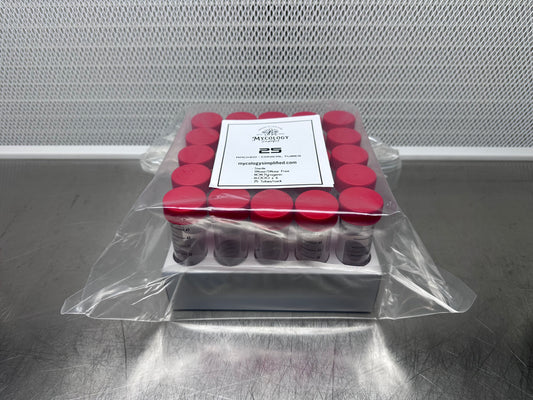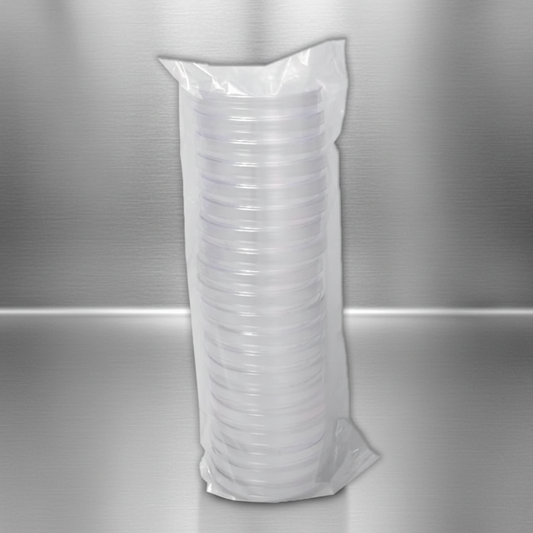Agar & Agar Supplies
Sterile pre-poured plates, premium agar powders, and more—trusted, ready-to-use products to support your fungal growth.
-
Pre Poured Sorghum Yeast Agar for Fungi Culturing – Sterile, High-Quality Sorghum Yeast Agar
Vendor:Mycologysimplified4.93 / 5.0
(58) 58 total reviews
Regular price From $7.99Regular price -
Malt Extract Agar (MEA) Plates – Ready-to-Use Sterile Petri Dishes
Vendor:Mycologysimplified4.89 / 5.0
(36) 36 total reviews
Regular price From $7.99Regular price -
MYA Agar for Fungi Culturing – Sterile, High-Quality Malt Yeast Agar
Vendor:Mycologysimplified4.79 / 5.0
(19) 19 total reviews
Regular price From $7.99Regular price -
MYA Agar with Carbon – Malt Yeast Agar Plates for Enhanced Growth
Vendor:Mycologysimplified4.85 / 5.0
(41) 41 total reviews
Regular price From $7.99Regular price -
MYPA Agar for Fungi Culturing – Sterile, High-Quality Malt Yeast Peptone Agar
Vendor:Mycologysimplified5.0 / 5.0
(11) 11 total reviews
Regular price From $7.99Regular price -
Low Nutrient Agar for Fungi Culturing – Sterile, High-Quality Media
Vendor:Mycologysimplified5.0 / 5.0
(19) 19 total reviews
Regular price From $7.99Regular price -
Pre-Mixed Agar Powder for Fungi Cultivation - Convenient & Consistent Quality
Vendor:Mycologysimplified4.88 / 5.0
(8) 8 total reviews
Regular price From $7.99Regular price -
Autoclavable/Reusable PP5 Petri Dishes
Vendor:Microppose5.0 / 5.0
(8) 8 total reviews
Regular price $15.00Regular price -
CellTreat Petri Dish (20 Pack)
Vendor:Mycology Simplified5.0 / 5.0
(4) 4 total reviews
Regular price $10.00Regular price -
Agar Agar Powder – 1 Pound Bulk Bag for Fungi Culturing
Vendor:Mycologysimplified5.0 / 5.0
(4) 4 total reviews
Regular price $25.00Regular price$29.00Sale price $25.00Sold out -
Media Bottles - Borosilicate - Round
Vendor:Mycologysimplified5.0 / 5.0
(5) 5 total reviews
Regular price From $12.99Regular price -
PYREX Slim Line Storage Bottles
Vendor:Mycologysimplified5.0 / 5.0
(5) 5 total reviews
Regular price From $20.00Regular price -
Square Borosilicate Media Bottles - Durable Liquid Storage with Leakproof Caps
Vendor:Mycologysimplified5.0 / 5.0
(5) 5 total reviews
Regular price From $12.99Regular price -
Lab Particulate and Contaminate Meter
Vendor:Mycology Simplified5.0 / 5.0
(2) 2 total reviews
Regular price $69.99Regular price -
#11 Carbon Scalpel Blades
Vendor:Mycology Simplified5.0 / 5.0
(3) 3 total reviews
Regular price From $0.33Regular price -
#12 Carbon Scalpel Blades
Vendor:Mycology Simplified5.0 / 5.0
(2) 2 total reviews
Regular price From $0.33Regular price -
Scalpel Handle No. 3 - Premium Stainless Steel
Vendor:Premium InstrumentsRegular price $9.99Regular price -
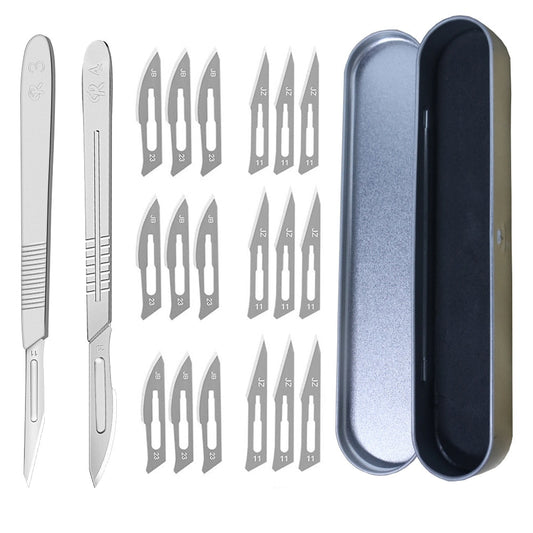
 Sold out
Sold outScalpel Set W/Blades
Vendor:Mycologysimplified5.0 / 5.0
(2) 2 total reviews
Regular price $12.99Regular price -
Scalpel Handle No. 7- Premium Stainless Steel
Vendor:Premium Instruments5.0 / 5.0
(5) 5 total reviews
Regular price $10.99Regular price -
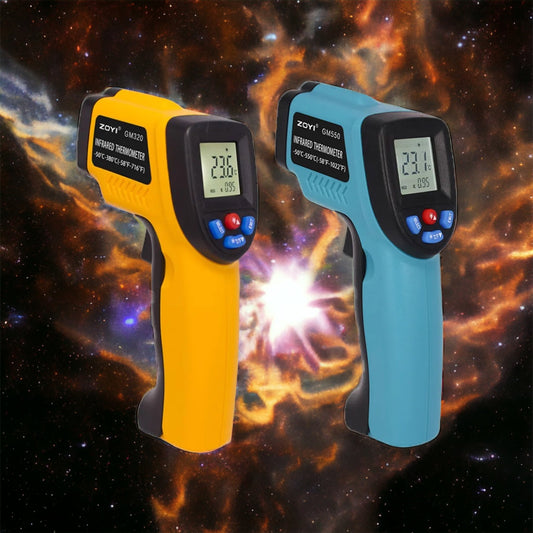
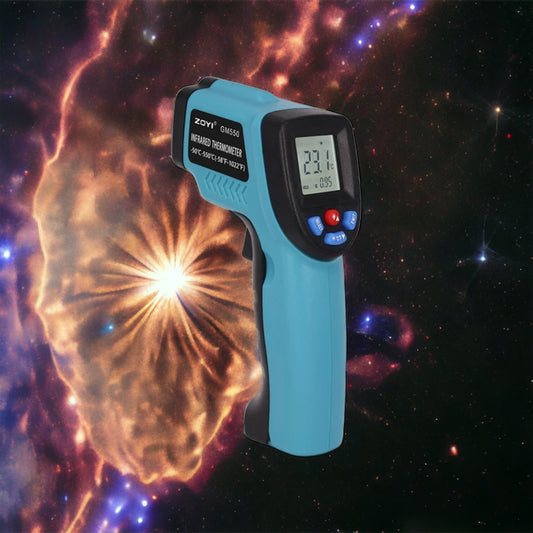 Sold out
Sold outDigital Infrared Laser Thermometer
Vendor:Mycologysimplified5.0 / 5.0
(1) 1 total reviews
Regular price From $20.99Regular price -
Digital Infrared Laser Thermometer ST390+
Vendor:MycologysimplifiedRegular price $25.00Regular price -
LCD Digital Scales
Vendor:Mycologysimplified5.0 / 5.0
(4) 4 total reviews
Regular price $20.12Regular price -
Agar Winter Package
Vendor:UniHeat5.0 / 5.0
(5) 5 total reviews
Regular price From $6.00Regular price -
Laboratory PolyFilm 200m
Vendor:MycologysimplifiedRegular price $8.00Regular price -
25-Pack Sterile 50mL Slant/Conical Tubes with Rack
Vendor:Mycology Simplified5.0 / 5.0
(2) 2 total reviews
Regular price $12.99Regular price$18.99Sale price $12.99Sold out -
Microppose Petri Dish (20 Pack)
Vendor:Mycology SimplifiedRegular price $10.00Regular price
Art of AgAr
Ingredients Explained
Lab Grade Gelidium Agar
Lab grade Gelidium agar powder is a high-quality agar product primarily used in scientific laboratories for various applications such as microbiology, molecular biology, and biotechnology. Gelidium agar is derived from red seaweed of the Gelidium genus and is known for its high gel strength and purity.
Description:
1. Purity: Lab grade Gelidium agar powder is highly purified to ensure minimal impurities that could interfere with experimental results. It typically has a high agarose content, which is the key component responsible for solidifying agar media.
2. Gel Strength: Gelidium agar is prized for its excellent gel strength, which ensures firm, stable agar gels suitable for a wide range of applications. The gel strength is often measured in grams or bloom units.
3. Solubility: This agar powder is readily soluble in water, allowing for easy preparation of agar solutions. It dissolves without leaving behind clumps or residue, resulting in clear agar media.
4. Gelling Temperature: Gelidium agar typically solidifies at relatively low temperatures, making it suitable for both microbial culture and electrophoresis applications where heat-sensitive samples need to be maintained.
5. Sterility: Lab grade Gelidium agar powder is often sterilized through gamma irradiation or autoclaving to ensure that it is free from microbial contamination, which is crucial for maintaining the integrity of experiments.
6. Consistency: Manufacturers strive to maintain consistency in the properties of Gelidium agar from batch to batch, ensuring reliable results and minimizing experimental variability.
7. Packaging: It is commonly available in airtight containers to prevent moisture absorption and maintain its quality over time. Proper storage in a cool, dry place is recommended to prolong its shelf life.
Overall, lab grade Gelidium agar powder is a reliable and versatile agar product trusted by scientists for a wide range of laboratory applications.
Gelidium is soluble in boiling water, Kosher Certified, and classified as GRAS by the FDA.
Malt Extract Powder
Malt extract powder is a dehydrated form of malt extract, a sweet syrup obtained from malted barley grains. It is commonly used in mycology agar, particularly in the preparation of agar media for cultivating fungi.
Description
1. Composition: Malt extract powder is rich in carbohydrates, proteins, vitamins, and minerals derived from malted barley. It contains maltose, glucose, proteins, amino acids, vitamins B complex, and various minerals like potassium and magnesium.
2. Nutrient-rich: Malt extract powder serves as a rich nutrient source for fungal growth. The carbohydrates provide energy for fungal metabolism, while proteins and amino acids support fungal cell growth and reproduction. Additionally, vitamins and minerals supplied by malt extract promote healthy fungal development.
3. pH buffering: Malt extract powder helps buffer the pH of agar media to favor fungal growth. Fungi typically thrive in slightly acidic to neutral pH conditions, and malt extract contributes to maintaining the optimal pH range for fungal cultivation.
4. Complexity: Malt extract powder provides a complex mixture of nutrients that closely mimics the natural environment in which fungi grow. This complexity supports the growth of a wide range of fungi, making malt extract agar suitable for culturing diverse fungal species.
5. Versatility: Malt extract agar can be used for various purposes in mycology, including the isolation, identification, and maintenance of fungal cultures. It supports the growth of both filamentous fungi (molds) and yeasts, making it a versatile medium for mycological research.
6. Preparation: Malt extract powder is easy to use in agar media preparation. It is typically dissolved in water and combined with agar to form a solid medium suitable for fungal culture. The concentration of malt extract can be adjusted to meet specific experimental requirements.
7. Availability: Malt extract powder is commercially available from laboratory suppliers in standardized formulations, ensuring consistency and reliability in agar media preparation.
Overall, malt extract powder is a key component of mycology agar due to its nutrient-rich composition, pH buffering capacity, versatility, and ability to support the growth of diverse fungi. It plays a crucial role in providing an optimal environment for the cultivation and study of fungi in laboratory settings.
Soy Peptone
Soy peptone lab grade powder is a finely ground, purified form of soy peptone, a hydrolyzed protein derived from soybeans. It is commonly utilized in mycology agar for various purposes.
Description
1. Composition: Soy peptone powder consists of peptides, amino acids, and small protein fragments obtained through the enzymatic digestion of soybean protein. It is rich in nitrogenous compounds essential for fungal growth and metabolism.
2. Nutrient source: Soy peptone serves as a primary nitrogen source in mycology agar, providing essential amino acids and peptides necessary for fungal protein synthesis, cell growth, and reproduction. It supplements the carbonaceous compounds present in agar, ensuring balanced nutrition for fungal cultures.
3. Complexity: Soy peptone contributes to the complexity of agar media by providing a diverse array of nitrogenous compounds. This complexity supports the growth of a wide range of fungal species, making soy peptone agar suitable for culturing diverse fungi encountered in mycological studies.
4. pH buffering: Soy peptone helps buffer the pH of agar media, maintaining the optimal pH range for fungal growth. It contributes to stabilizing the pH of the medium, preventing drastic fluctuations that could inhibit fungal development.
5. Versatility: Soy peptone agar is versatile and can be used for various mycological applications, including the isolation, identification, and maintenance of fungal cultures. It supports the growth of both filamentous fungi (molds) and yeasts, making it a valuable medium in fungal research.
6. Preparation: Soy peptone powder is easy to use in agar media preparation. It is typically dissolved in water and combined with agar and other components to formulate a solid medium suitable for fungal culture. The concentration of soy peptone can be adjusted based on specific experimental requirements.
7. Availability: Soy peptone lab grade powder is commercially available from laboratory suppliers in standardized formulations, ensuring consistency and reliability in agar media preparation.
Overall, soy peptone lab grade powder is an essential component of mycology agar due to its nutrient-rich composition, pH buffering capacity, versatility, and ability to support the growth of diverse fungal species. It plays a crucial role in providing an optimal environment for the cultivation and study of fungi in laboratory settings.
Lab Grade Yeast Extract
Lab grade yeast extract powder is a refined form of yeast extract, a substance derived from the cells of Saccharomyces cerevisiae or other yeast species. It is widely utilized in mycology agar for several reasons. Here's a description of lab grade yeast extract powder and its significance in mycology agar.
Description:
1. Composition: Lab grade yeast extract powder contains a rich array of nutrients derived from yeast cells, including amino acids, peptides, vitamins, minerals, nucleotides, and other growth-promoting factors essential for fungal growth.
2. Nutrient source: Yeast extract serves as a potent nutrient source in mycology agar, providing a readily available supply of nitrogenous compounds, vitamins, and minerals crucial for fungal metabolism, cell growth, and reproduction.
3. Complexity: Yeast extract contributes to the complexity of agar media by supplying a diverse range of nutrients. Its complex composition supports the growth of a wide variety of fungal species encountered in mycological studies, making it suitable for culturing diverse fungi.
4. Enzymatic activity: Yeast extract contains enzymes such as proteases and peptidases, which hydrolyze proteins into smaller peptides and amino acids. This enzymatic activity helps release nutrients from complex protein sources, enhancing their availability for fungal uptake and utilization.
5. pH buffering: Yeast extract contributes to pH buffering in agar media, helping to maintain the optimal pH range for fungal growth. It assists in stabilizing the pH of the medium, preventing drastic fluctuations that could hinder fungal development.
6. Versatility: Yeast extract agar is versatile and can be used for various mycological applications, including fungal isolation, identification, and maintenance of cultures. It supports the growth of both filamentous fungi (molds) and yeasts, making it a valuable medium in fungal research.
7. Preparation: Lab grade yeast extract powder is easy to use in agar media preparation. It is typically dissolved in water and combined with agar and other components to formulate a solid medium suitable for fungal culture. The concentration of yeast extract can be adjusted based on specific experimental requirements.
8. Availability: Lab grade yeast extract powder is commercially available from laboratory suppliers in standardized formulations, ensuring consistency and reliability in agar media preparation.
In summary, lab grade yeast extract powder is an indispensable component of mycology agar due to its nutrient-rich composition, pH buffering capacity, enzymatic activity, versatility, and ability to support the growth of diverse fungal species. It plays a crucial role in providing an optimal environment for the cultivation and study of fungi in laboratory settings.
Sorghum Syrup
Sorghum syrup is a natural sweetener derived from the juice of sorghum grass (Sorghum bicolor). It is utilized in mycology agar for specific purposes.
Description
1. Composition: Sorghum syrup is primarily composed of sugars, primarily sucrose, glucose, and fructose, obtained from the hydrolysis of sorghum juice. It also contains small amounts of minerals, vitamins, and organic acids.
2. Carbon source: Sorghum syrup serves as a carbon source in mycology agar, providing energy for fungal metabolism and growth. The sugars present in sorghum syrup are readily metabolized by fungi, supporting their nutritional needs during cultivation.
3. pH regulation: Sorghum syrup contributes to pH regulation in agar media, helping to maintain the optimal pH range for fungal growth. It assists in stabilizing the pH of the medium, preventing drastic fluctuations that could affect fungal development.
4. Moisture retention: Sorghum syrup helps retain moisture in agar media, preventing dehydration and ensuring an optimal environment for fungal growth. Adequate moisture levels are essential for fungal metabolism and the formation of healthy colonies.
5. Nutrient supplementation: While sorghum syrup primarily serves as a carbon source, it also provides minor nutrients such as vitamins and minerals, albeit in smaller quantities compared to other components of agar media. These nutrients contribute to the overall nutritional balance of the medium, supporting fungal growth and development.
6. Specific applications: Sorghum syrup may be used in specialized agar formulations designed for specific fungi or experimental conditions. Its inclusion can influence the growth characteristics of certain fungal species or enhance the production of specific metabolites or enzymes in fungal cultures.
7. Preparation: Sorghum syrup is typically added to agar media during the preparation process. It is dissolved in water and combined with other agar components to formulate a solid medium suitable for fungal culture. The concentration of sorghum syrup can be adjusted based on specific experimental requirements.
8. Availability: Sorghum syrup is commercially available and can be obtained from suppliers specializing in laboratory reagents or food ingredients. It is often sold in liquid form and can be stored at room temperature.
In summary, sorghum syrup is utilized in mycology agar primarily as a carbon source and pH regulator. Its inclusion in agar media contributes to the nutritional balance, moisture retention, and overall suitability of the medium for fungal cultivation. While not as commonly used as other agar components, sorghum syrup plays a significant role in certain mycological applications and experimental setups.
Activated Carbon
Activated carbon, also known as activated charcoal, is a form of carbon processed to have small, low-volume pores that increase the surface area available for adsorption or chemical reactions. It finds applications in various fields, including mycology agar, for specific purposes.
Description
1. Composition: Activated carbon is predominantly composed of carbon atoms, arranged in a highly porous structure. It is produced from carbonaceous source materials such as wood, coal, coconut shells, or peat, which undergo a process of activation, typically involving high temperatures and steam or chemical treatments.
2. Porous structure: Activated carbon possesses a highly porous structure with a large surface area per unit volume. These pores can range from nanometers to micrometers in size, providing ample surface area for adsorption of molecules and ions from the surrounding environment.
3. Adsorption properties: One of the primary functions of activated carbon in mycology agar is its ability to adsorb inhibitory compounds or contaminants present in the medium. Activated carbon can effectively adsorb toxins, inhibitors, pigments, and other substances that may interfere with fungal growth or obscure colony morphology.
4. Decontamination: Activated carbon is utilized in mycology agar to decontaminate the medium and eliminate unwanted microbial contaminants. It can adsorb bacteria, molds, and other microorganisms present in the agar, thereby promoting the growth of pure fungal cultures and preventing cross-contamination.
5. Color removal: Activated carbon can also be employed to remove colorants or pigments from agar media, enhancing the visibility of fungal colonies and facilitating the observation and analysis of fungal growth characteristics.
6. Odor control: In some cases, activated carbon is used in mycology agar to control unpleasant odors associated with microbial metabolism or decomposition of organic matter. It can adsorb volatile organic compounds responsible for malodorous emissions, improving the overall laboratory environment.
7. Antioxidant properties: Activated carbon may possess antioxidant properties, which could potentially protect fungal cultures from oxidative stress and improve their viability and growth performance in agar media.
8. Preparation: Activated carbon is typically added to agar media during the preparation process. It is thoroughly mixed with other agar components before solidification to ensure uniform distribution throughout the medium.
9. Availability: Activated carbon is commercially available in various forms, including powder, granules, and pellets, from suppliers specializing in laboratory reagents or chemical products.
In summary, activated carbon is utilized in mycology agar primarily for its adsorption properties, which enable the removal of contaminants, colorants, and odorous compounds from the medium. Its inclusion contributes to the preparation of high-quality agar media suitable for the cultivation and study of fungi in laboratory settings.
Featured collection
-
Not So Simple Mushroom Substrate - Advanced Mix for Superior Growth
Regular price From $10.00Regular price -
Pre Poured Sorghum Yeast Agar for Fungi Culturing – Sterile, High-Quality Sorghum Yeast Agar
Regular price From $7.99Regular price -
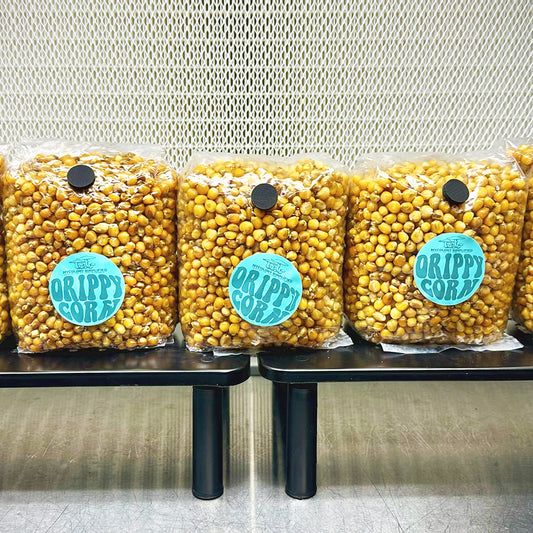 Sold out
Sold outDrippy Corn Mushroom Grain Spawn
Regular price $10.00Regular price -
Malt Extract Agar (MEA) Plates – Ready-to-Use Sterile Petri Dishes
Regular price From $7.99Regular price -
2 Pack of 3lb Milo Sorghum Sterile Mushroom Grain Bags
Regular price $17.99Regular price

